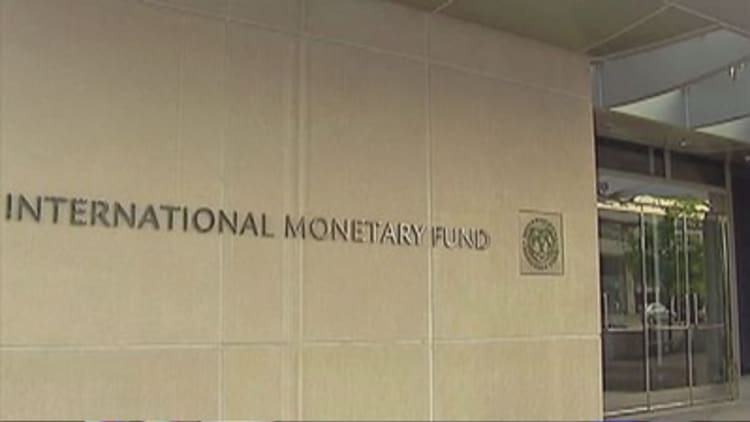
The International Monetary Fund cut its global economic growth forecast for 2016 on Tuesday as it expects a number of factors to weigh on world economies.
Global growth for this year is seen at 3.4 percent, up from a 3.1 percent forecast for 2015, but 0.2 percent lower than previously forecast, the IMF's World Economic Outlook report said. The IMF said "pickup in global activity is projected to be more gradual than in the October 2015 World Economic Outlook, especially in emerging market and developing economies."
"Risks to the global outlook remain tilted to the downside and relate to ongoing adjustments in the global economy," according to the report.
The organization cited slower growth in emerging markets, especially in China, falling commodity prices, and rising interest rates in the U.S. as potential risks to global growth.
Weak Chinese manufacturing data — coupled with plunging commodity prices — have sent equity markets around the world into flux.
"Overall growth in China is evolving broadly as envisaged, but with a faster-than-expected slowdown in imports and exports, in part reflecting weaker investment and manufacturing activity," the IMF said. "These developments, together with market concerns about the future performance of the Chinese economy, are having spillovers to other economies through trade channels and weaker commodity prices, as well as through diminishing confidence and increasing volatility in financial markets."
The three major U.S. indexes are off to their worst start in history, having fallen into correction territory, or down at least 10 percent from their 52-week high. Year to date, the Dow Jones industrial average and the benchmark have fallen about 8 percent, while the Nasdaq composite has lost over 10 percent.
U.S. oil prices have plunged nearly 20 percent in 2016 amid oversupply concerns.
"Lower oil prices strain the fiscal positions of fuel exporters and weigh on their growth prospects, while supporting household demand and lowering business energy costs in importers, especially in advanced economies, where price declines are fully passed on to end users," according to the IMF.
Regarding U.S. monetary policy, the IMF said it still remains "very accomodative," but that the possibility of future rate hikes "have contributed to tighter external financial conditions, declining capital flows, and further currency depreciations in many emerging market economies."
The Federal Reserve, the U.S. central bank, raised rates for the first time in nearly a decade last month and has said it will remain "data dependent" when determining future rate hikes.






